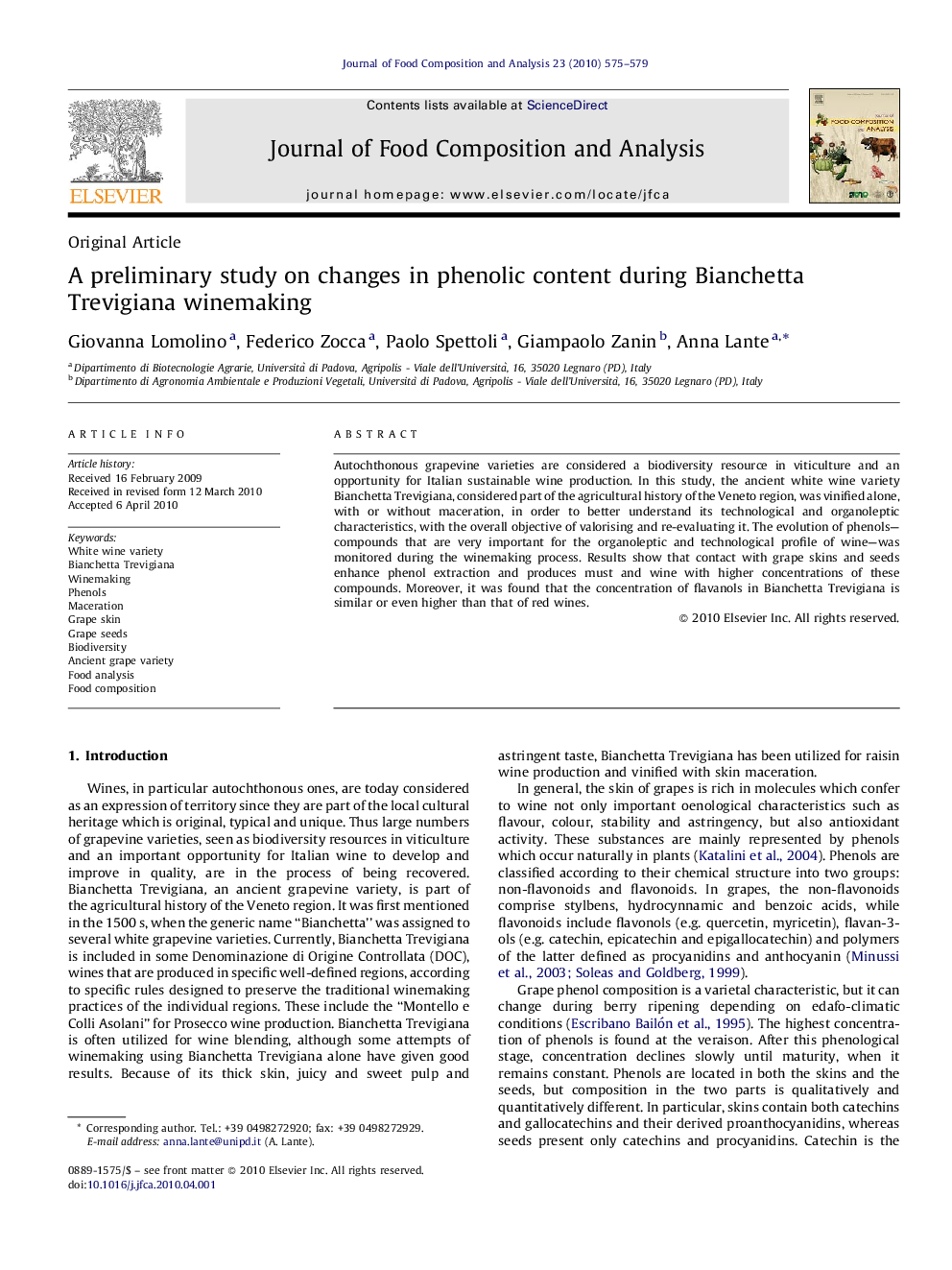| Article ID | Journal | Published Year | Pages | File Type |
|---|---|---|---|---|
| 1218483 | Journal of Food Composition and Analysis | 2010 | 5 Pages |
Autochthonous grapevine varieties are considered a biodiversity resource in viticulture and an opportunity for Italian sustainable wine production. In this study, the ancient white wine variety Bianchetta Trevigiana, considered part of the agricultural history of the Veneto region, was vinified alone, with or without maceration, in order to better understand its technological and organoleptic characteristics, with the overall objective of valorising and re-evaluating it. The evolution of phenols—compounds that are very important for the organoleptic and technological profile of wine—was monitored during the winemaking process. Results show that contact with grape skins and seeds enhance phenol extraction and produces must and wine with higher concentrations of these compounds. Moreover, it was found that the concentration of flavanols in Bianchetta Trevigiana is similar or even higher than that of red wines.
